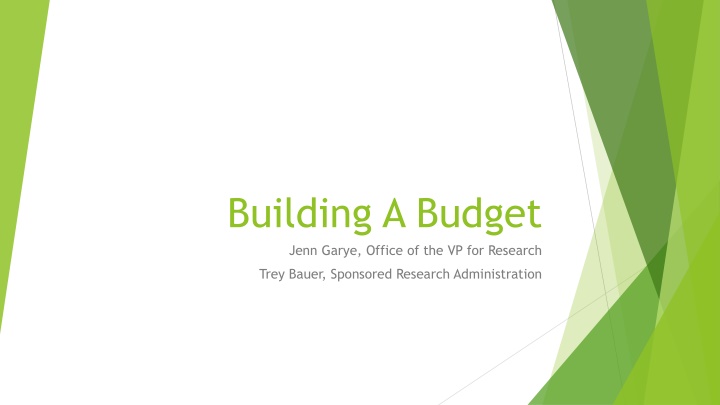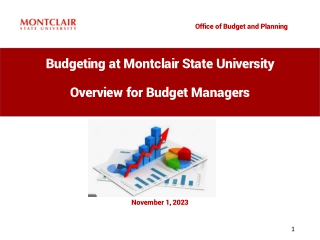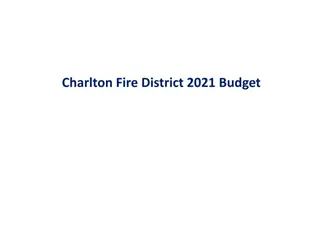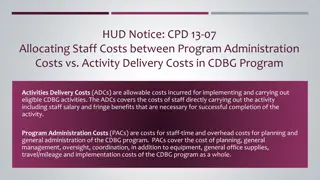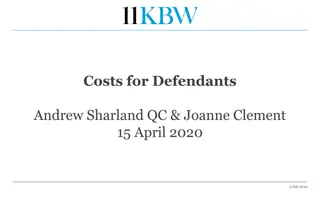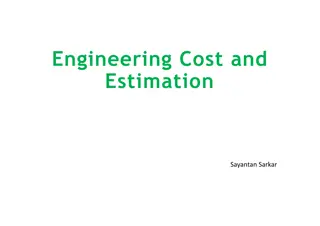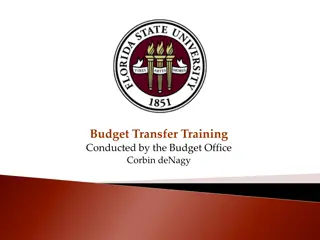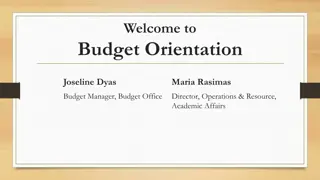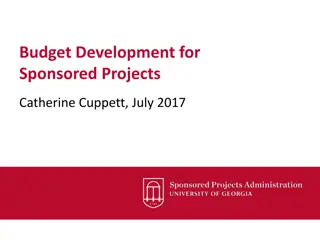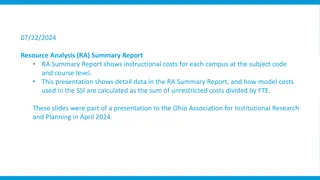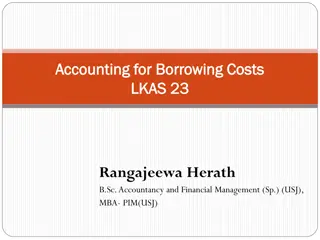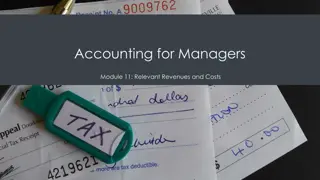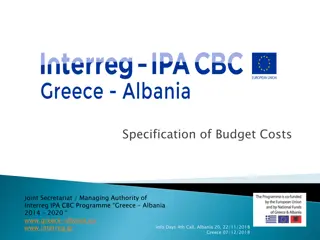Building a Budget: Concept, Costs, and Benefits
The concept of building a budget involves understanding direct and indirect costs, calculating salaries and fringe benefits, and justifying project expenses. Explore the key components and considerations to effectively create and manage budgets for research projects.
Download Presentation

Please find below an Image/Link to download the presentation.
The content on the website is provided AS IS for your information and personal use only. It may not be sold, licensed, or shared on other websites without obtaining consent from the author.If you encounter any issues during the download, it is possible that the publisher has removed the file from their server.
You are allowed to download the files provided on this website for personal or commercial use, subject to the condition that they are used lawfully. All files are the property of their respective owners.
The content on the website is provided AS IS for your information and personal use only. It may not be sold, licensed, or shared on other websites without obtaining consent from the author.
E N D
Presentation Transcript
Building A Budget Jenn Garye, Office of the VP for Research Trey Bauer, Sponsored Research Administration
Objectives Understanding the concept of building a budget Identify types of costs direct & indirect Calculating salaries & fringe benefit rates Calculating indirect costs Budget Exercises
The Concept of Building a Budget WHO? PI Co-PIs Post Docs Graduate Students Subawards WHAT? Supplies Auxiliary services Publication Costs Equipment
The Concept of Building a Budget WHERE? Travel to conferences to present research Travel to field location to complete research Work performed on-campus or off-campus WHEN? How long does the project period need to be? WHY? Justification for the costs
Direct Costs vs. Indirect Costs Direct Costs Items that can be specifically identified for a particular project Reasonable, allowable & allocable Examples: Salaries, Supplies, Travel, Publication Costs Indirect Costs Also known as Research Operating Costs or F&A Costs They can t be identified with a particular project, but they are necessary to conduct research Examples: Administrative Support, Office Supplies, Telecom, Utilities
Salaries & Fringe Benefits Generally based on FTE, percent effort, person months, etc. To calculate percent effort Months on Project / Appointment Months = % Effort 2 months on project / 12 month appointment = 16.7% effort (Calendar Year) 2 months on project / 9 month appointment = 22.2% effort (Academic Year) 1 month on project / 3 month summer term = 33.3% effort (Summer Months) Do not use hourly rates; FSU does not maintain timesheets for salaried employees 3% yearly cost of living increase is allowed 9 mo. vs. 12 mo. Appointment and health insurance Refer to the Facts Sheet for current fringe rates
Graduate Students Considered salary employees Allowed up to .50 FTE or 20 hours/week per the GAU Minimum wage is $15.38/hour or $16,056.72 per year Fringe Benefits OPS Students Rate Health Insurance Subsidy Tuition FSU requirement for 9/hours per semester Proportionate to appointment 1% escalation per year
Other Direct Costs Equipment >$5,000 with a useful life of 1 year Travel Must be in accordance with FSU travel policies Differentiate between Domestic & Foreign Travel Needs detailed justification Participant Support Costs vs. Participant Incentives Support costs are stipends, allowances or fees paid to or on behalf of a participant or trainee, not an employee Incentives are items (gift cards, etc.) or cash paid to an individual to participate in a study, such as completing a survey, etc.
Other Direct Costs Tuition Materials & Supplies includes computers or equipment <$5,000 Publications Consultants Subawards Other items specifically needed for your project
Indirect Costs Federally negotiated rate Based on the sponsor, project location, and project purpose See the Facts Sheet for the current F&A rates Two Bases Modified Total Direct Costs (MTDC) Federal & Federal Flow-through Total Direct Costs (TDC) State of Florida
Exclusions from IDC Base MTDC rate excludes: Equipment Tuition Rent (off-site facilities) Participant Support Costs (not Participant Incentives) Amount of Subcontracts >$25,000 Scholarships & Fellowships TDC rate excludes: Tuition
Cost Share & Funding Caps Cost Share FSU policy only allows for cost sharing when it is required by the sponsor Voluntary cost sharing is not a factor during the merit review process for Federal Awards (2 CFR 200.306) Funding Caps Some solicitations include caps on award amounts Need to make sure you can realistically perform the work you are proposing If Indirect Cost is included in the cap (Total Costs Exclusions) / 1.52 = Direct Costs
Budget Exercise #1 I want to submit a proposal for this solicitation. I need some salary probably about a month. Assumptions: 12mo faculty; $130,500 annual salary; ORP plan; Individual Health Ins. I need one grad student for a full year. Assumptions: $26,100 annual salary I need to go to a conference in California to present my findings. I need to purchase some supplies. I need to publish my findings. Indirect Cost Assumptions: On-Campus, federal research project
Budget Exercise #2 Budget Justification Handout
